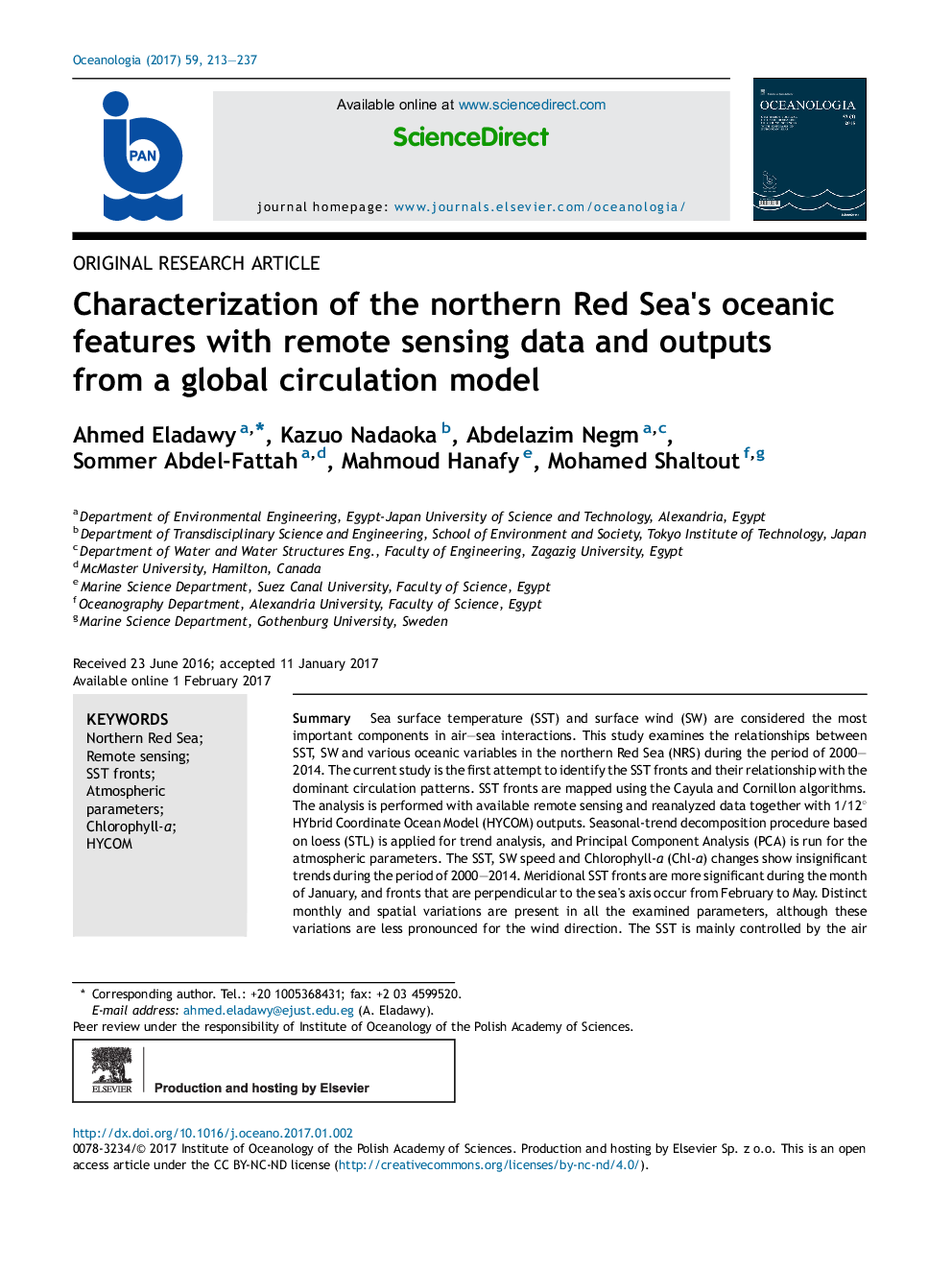| Article ID | Journal | Published Year | Pages | File Type |
|---|---|---|---|---|
| 5519771 | Oceanologia | 2017 | 25 Pages |
SummarySea surface temperature (SST) and surface wind (SW) are considered the most important components in air-sea interactions. This study examines the relationships between SST, SW and various oceanic variables in the northern Red Sea (NRS) during the period of 2000-2014. The current study is the first attempt to identify the SST fronts and their relationship with the dominant circulation patterns. SST fronts are mapped using the Cayula and Cornillon algorithms. The analysis is performed with available remote sensing and reanalyzed data together with 1/12° HYbrid Coordinate Ocean Model (HYCOM) outputs. Seasonal-trend decomposition procedure based on loess (STL) is applied for trend analysis, and Principal Component Analysis (PCA) is run for the atmospheric parameters. The SST, SW speed and Chlorophyll-a (Chl-a) changes show insignificant trends during the period of 2000-2014. Meridional SST fronts are more significant during the month of January, and fronts that are perpendicular to the sea's axis occur from February to May. Distinct monthly and spatial variations are present in all the examined parameters, although these variations are less pronounced for the wind direction. The SST is mainly controlled by the air temperature and sea level pressure. Significant correlations exist between the SST and the studied parameters (alongshore wind stress rather than the cross-shore wind stress, surface circulation, MLD, and Chl-a). Surface winds generally flow southeastward parallel to the Red Sea's axis explaining that alongshore wind stress is highly correlated with the studied parameters.
